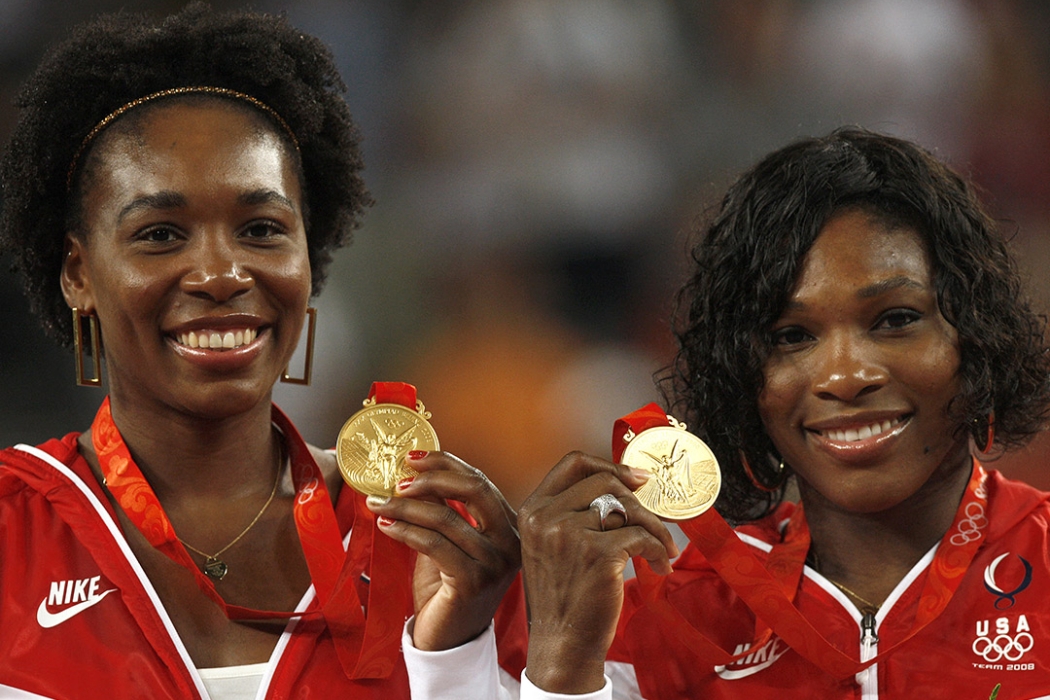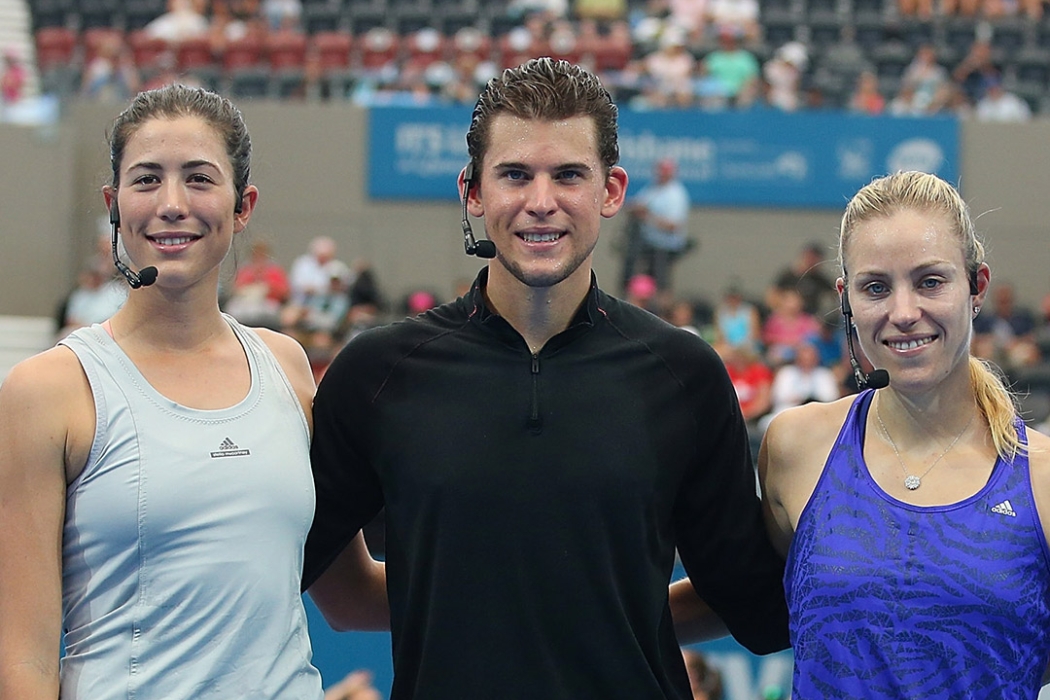More than 20 years after first playing tennis professionally, Angelique Kerber’s glittering career has come to an end.
The three-time Grand Slam champion played her last match at the Paris 2024 Olympics, falling in a final-set tiebreak to Zheng Qinwen in the quarterfinals.
Kerber, 36, announced on Instagram that the Olympics were the appropriate place to end a career that saw her peak at world No.1, win 14 titles and cement herself as a tennis legend.
FAREWELL ANDY MURRAY: Britain's Scot talent
“Whereas this might actually be the right decision, it will never feel that way. Simply because I love the sport with all my heart and I’m thankful for the memories and opportunities it has given me,” the German wrote.
“The Olympics I’ve participated in so far have been more than just competitions as they represent different chapters of my life as a tennis player: the climb, the peak… and now, the finish line.”
That climb, peak and finish spanned two decades – a career journey exemplifying Kerber’s patience, resilience and determination.
Her best season, in 2016, came 10 years after her tour-level debut. And even that tour-level debut, in Hasselt in 2006, came three years after Kerber first appeared in qualifying at the WTA tournament in Berlin, in 2003, at age 15.
She competed for almost five years at Grand Slams before finally reaching a second week, which she did at the 2011 US Open. That was a tournament she went all the way to the semifinals, coming within a set of her first major final.
Kerber was then ranked world No.92, but this result was the shot of belief and momentum she needed.
The climb
Just over one year later she was inside the top five, having reached the Roland Garros quarterfinals and semis at Wimbledon in 2012. That season was when she won her first career WTA title at the Paris Indoors, and made her Olympic debut, reaching the singles quarterfinals.
“The Olympics in London 2012 came at a time when I had my breakthrough season on the tour,” Kerber reflected.
“I was climbing the rankings steadily and every win helped me overcome my doubts and strengthened my self-belief. It all felt like new beginnings and I was carried by excitement to new heights.
“The year before, in 2011, I had almost turned my back on tennis and given up on my childhood dreams.”
For the next five years, Kerber became a near-permanent fixture in the top 10. But for a time she struggled to break through at the very highest level, reaching just one Grand Slam quarterfinal from 2013 to 2015 and losing nine of her first 12 career finals.
Things began shifting in 2015, when she scooped four titles – her biggest haul in a single season – and improved her ranking from a low of 16th in April to No.7 by October.
We didn’t know it at the time, but it foreshadowed an unforgettable 2016 season.
The peak
Kerber reinvented herself from excellent pro to all-time great when she stunned Serena Williams to win her first major trophy at Australian Open 2016. Victory followed later in the year at the US Open, after she’d reached the Wimbledon final – major results so impressive they helped her attain the No.1 ranking on 12 September.
She also won Olympic singles silver at Rio 2016 and reached an outstanding eight tour-level finals.
The ultimate stamp of approval came from Williams who, in response to a WTA Instagram post revealing the nominees for 2016 Player of the Year, simply commented: “Kerber”.
Serena was one of the nominees.

“When I arrived at the Olympics in Rio 2016, I had just won my first Grand Slam title in Australia at the beginning of the year. My silver medal run was embedded in a rush of emotions that led to my second Grand Slam title in New York and the top of the rankings,” Kerber wrote.
“The descent in the following year was hurtful, but I learned my lesson and Wimbledon 2018 was my biggest reward.”
Kerber admitted at AO 2017 she felt “a lot of pressure” as world No.1, and lost in the fourth round of her title defence. She was ejected in the first round of the US Open, and finished the season outside the top 20, with a lukewarm win-loss record of 29-24.
Her 2018 season was phoenix-like.
She was just a point away from the Australian Open 2018 final – more on that later – and reached the quarterfinals at Roland Garros, before again beating Williams, this time in the Wimbledon final.
Apart from Venus Williams, Kerber is the only player to beat Serena in multiple major finals.
That triumph put her three-quarters of the way to a career Grand Slam, and she ended 2018 at world No.2 after posting almost 50 match wins.
The game
Kerber’s enduring talent was built on a number of pillars. She played left-handed and with an unorthodox style, making her game extremely hard to read. At her peak she was perhaps the best counter-puncher and defender in the game.
After bunting balls she could suddenly inject pace, completely catching opponents off guard. One of the fittest players in the world, her core and leg strength made her almost immovable from the baseline, and she was famous for crouching into a deep knee-bend to absorb powerful shots.
As Roger Federer discovered in an incredible 2019 Hopman Cup mixed doubles final between Switzerland and Germany, the harder he drove the ball at Kerber, the better she played.
Friend and compatriot Andrea Petkovic acknowledged that Kerber’s serve was not her strong point, but wrote in a Substack essay: “If tennis was played from the baseline only, Angie Kerber would have been the greatest female tennis player of all times.”
Kerber’s competitive fire was astounding, and that, plus her capacity to extend rallies, saw her feature in a number of classic matches – perhaps none more epic than her semifinal loss to Halep at AO 2018.
But she came out on top of several others. Her Charleston 2015 final against Madison Keys, that AO 2016 final against Serena, and later, an iconic battle in the second round of Wimbledon 2021 against Sara Sorribes Tormo, lasting three hours and 18 minutes.
Even her last tournament final, which she won in Strasbourg in 2022, featured a 7-6(5) 6-7(0) 7-6(5) triumph over Kaja Juvan, in three hours and 16 minutes.
While Kerber never returned to the same heights after that 2018 season, her semifinal run at Wimbledon in 2021 came almost 10 years after her first. It bookended a magnificent decade at the Slams during which she reached at least the quarterfinal stage 11 times, including four finals.
The finish
She took a break from the sport after Wimbledon 2022, announced her pregnancy in August that year and became a mother to daughter Liana in February 2023.
A brief comeback followed in Australia in 2024, and in her seven months on tour she reached the fourth round at Indian Wells – where she scored a top-10 win over Jelena Ostapenko – and in Rome.
RELATED - Kerber glad to be back at AO: "I still have the fire"
She upset Naomi Osaka in the first round of the Olympic Tennis Event in Paris, then Leylah Fernandez in the last 16, and pushed Zheng to the limit before her inspiring run finally came to an end, 8-6 in a third-set tiebreak.
“Paris 2024 will mark the finish line of the most incredible journey I could have ever dreamed of growing up with a racket in my hand,” Kerber wrote.
“There are many more things I want to say and people to thank, which I will do once I completed my last match… but for now, I will take the time and soak up every second of this final episode on court.
“Thank you all for your support – it means the world to me.”

